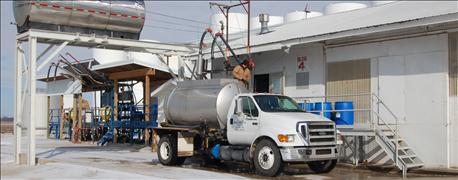
The idea is simple. Build a network that allows farmers to pool all kinds of production and input pricing data. Develop the tools to analyze the information. Share everything with the farmers who provided the data so they can make more informed decisions.
Charles Barin co-founded a service that does exactly that. While turning the idea into reality may have been a bit more complex, he says Farmers Business Network is growing.
“We have 9 million acres in 30 states, including 24 crops,” he says. “We added acres in Indiana at a rate of 200,000 per month during the summer of 2016.”

TRACK INPUT COSTS: Are you paying the same, more or less for inputs than other farmers? The Farmers Business Network allows you to find out.
FBN allows farmer-members to submit all kinds of data, including yields, spoil types and much more. Members also disclose buying prices for various inputs. Then FBN summarizes the information so farmers can see how what they’re doing stacks up against what other farmers are doing. You can check it out at farmersbusinessnetwork.com. Members pay $500 per year for access to all services.
Here’s a look at three ways Barin believes FBN can help farmers.
1. Provide analysis of reams of crop information.
Members submit information such as planting maps, yield maps, soil-type maps and more. They list specific hybrids and other products used. “If you grow Hybrid X, you can pull up information on how Hybrid X performed on similar soil types all over the country,” Barin says. You can also find information on how Hybrid Y from a different company performed under the same conditions.
The results aren't considered research findings, because the information provided is largely from commercial fields. How helpful the information is depends upon how many farmer-members plant that brand of seed and submit information about it. The system only includes information from farmer-members. Information is aggregated, but individual identity is protected, Barin says.
2. Allow transparency in pricing information.
If you are a member of FBN and pay $40 per gallon for Herbicide A, you can look and see what other farmers around the country paid for Herbicide A. Sometimes the spread is quite surprising, Barin observes. Information available in this tool on the web comes from what members have reported as prices paid for herbicides, seed, fertilizer and other inputs.
3. Offer national buying power.
FBN offers a national buying service for various products. It’s an option for farmers who can’t find a competitive price in their area, Barin says.
Some use the pricing tool to explain to their dealer that they can buy cheaper elsewhere. Others use it to shop around for the best deal. Sometimes, because of large-volume buying power, FBN can get a cheaper price for certain products than can be obtained locally. If you buy through FBN, products are shipped directly to you, Barin concludes.
About the Author(s)
You May Also Like




